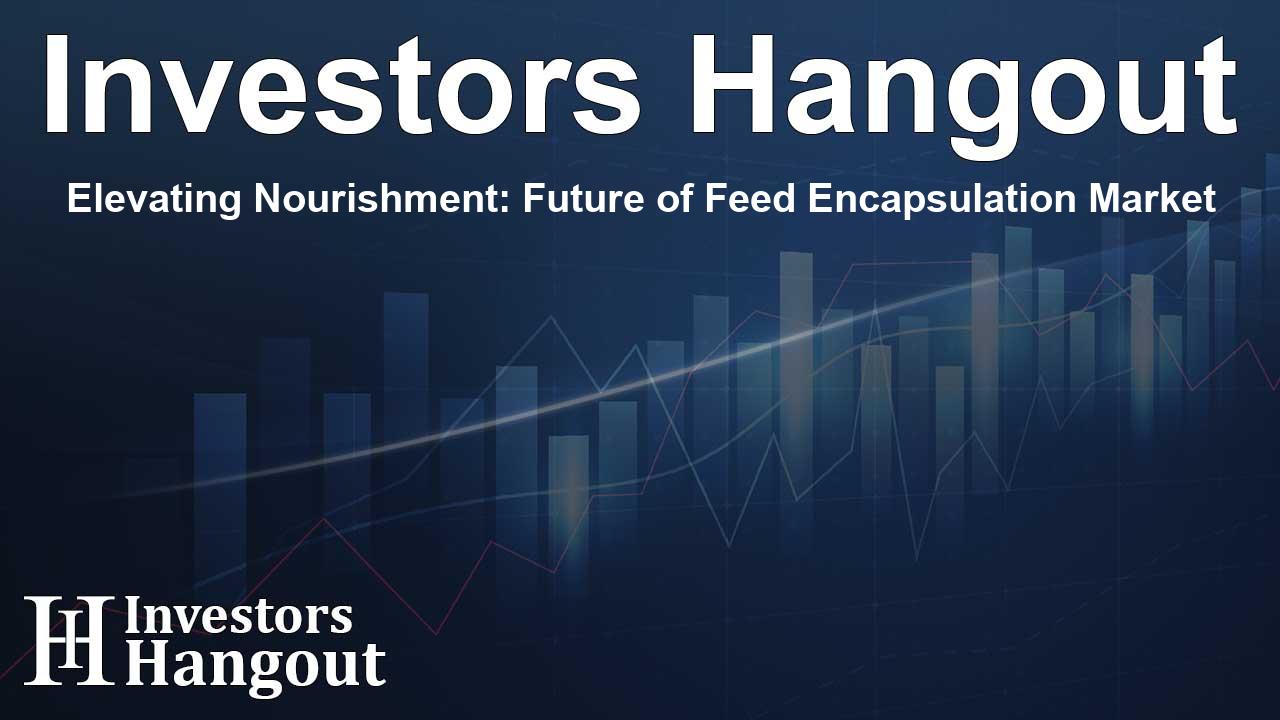Elevating Nourishment: Future of Feed Encapsulation Market

Overview of the Feed Encapsulation Market Growth
According to recent analyses, the global Feed Encapsulation market is on a lucrative trajectory, expected to reach a remarkable value of USD 904.7 million by 2034. This signifies a significant leap from the anticipated valuation of USD 504.2 million as of 2024. The surge in demand is projected at a compound annual growth rate (CAGR) of 6.0% over the next decade.
What Does Feed Encapsulation Involve?
Feed encapsulation refers to a specialized process that helps retain the efficacy of nutrients by preventing their premature release into the surrounding water in aquaculture settings. By forming a protective outer layer around the nutrients, encapsulation drastically enhances nutrient absorption while minimizing waste. This method ensures that substances only engage upon contact with the intended species, fostering better aquatic health and preserving water quality, both pivotal for sustainable farming practices.
Advantages of Feed Encapsulation
Encapsulation functions through advanced technologies that ensure nutrients are delivered precisely when needed in the digestive tract. Techniques, such as time-release capsules and pH-sensitive coatings, prove effective in safeguarding vital nutrients, enhancing their bioavailability and overall efficiency in absorption. As a result, animal health benefits markedly as a direct correlation of optimized nutrient utilization.
Regional Insights and Market Dynamics
The forecast for the Feed Encapsulation market is not just localized; it spans multiple global regions. For instance, North America is anticipated to dominate with a substantial market share of about 37.2%, amidst escalating demand for higher-quality animal products.
Key Market Metrics
As per the forecasts, considerable valuations are anticipated across various regions by 2034, including a projected market value of USD 146.6 million in the United States, approximately USD 108.6 million in China, and USD 32.6 million in India. Such insights underline the growing interest and commitment toward innovative feed practices globally.
Key Drivers Behind Market Expansion
Several factors are propelling the Feed Encapsulation market's growth:
- Nutritional Enhancement: Enhanced delivery systems enable improved absorption of essential nutrients including vitamins and minerals, positively impacting the overall health and productivity of livestock.
- Regulatory Compliance: Stricter regulatory frameworks surrounding feed safety are stimulating investment into encapsulation methods, offering a means to guarantee consistent nutrient delivery.
- Consumer Demand for Sustainability: The increasing awareness regarding animal welfare has raised the bar for high-quality feed; encapsulation serves as a practical solution to meet these demands.
- Technological Advancements: Innovations such as nano-encapsulation are paving the way for superior feed solutions, capturing market investments and expanding interest worldwide.
Challenges in the Feed Encapsulation Market
Despite bright prospects, the market faces its share of hurdles:
- Production Costs: The often high costs associated with developing encapsulated feeds can deter some producers from integrating these technologies into their offerings.
- Awareness Issues: A significant knowledge gap exists among many producers regarding the benefits of encapsulation, contributing to slow adoption rates.
- Complex Regulations: The necessity to navigate varying regulations across regions represents a complex challenge.
Competitive Landscape and Industry Innovations
Players in the Feed Encapsulation sector are increasingly focusing on research and development, emphasizing a commitment to sustainable practices and product enhancements. Companies like Kemin Industries and DSM are at the forefront, unveiling innovative products such as KESSENT and RONOZYME® ProAct respectively. These advancements are focused on refining nutrient delivery and enhancing overall feed efficiency, catering to rising global demand.
Leading Companies in the Market
- Kemin Industries
- DSM Nutritional Products
- Balchem Corporation
- Adisseo
- Evonik Industries
Frequently Asked Questions
What is the projected market value of the Feed Encapsulation market by 2034?
The global Feed Encapsulation market is expected to reach a valuation of USD 904.7 million by 2034.
What growth rate is anticipated for the Feed Encapsulation market?
The market is anticipated to grow at a CAGR of 6.0% during the forecast period.
Which regions are predicted to dominate the market?
North America is projected to hold a significant share, estimated at 37.2% by 2034.
What are the main drivers for market growth?
Key drivers include nutritional enhancement, regulatory compliance, consumer demand for sustainability, and technological advancements.
What challenges does the market face?
Challenges include high production costs, limited awareness, and navigating complex regulations.
About Investors Hangout
Investors Hangout is a leading online stock forum for financial discussion and learning, offering a wide range of free tools and resources. It draws in traders of all levels, who exchange market knowledge, investigate trading tactics, and keep an eye on industry developments in real time. Featuring financial articles, stock message boards, quotes, charts, company profiles, and live news updates. Through cooperative learning and a wealth of informational resources, it helps users from novices creating their first portfolios to experts honing their techniques. Join Investors Hangout today: https://investorshangout.com/
Disclaimer: The content of this article is solely for general informational purposes only; it does not represent legal, financial, or investment advice. Investors Hangout does not offer financial advice; the author is not a licensed financial advisor. Consult a qualified advisor before making any financial or investment decisions based on this article. The author's interpretation of publicly available data shapes the opinions presented here; as a result, they should not be taken as advice to purchase, sell, or hold any securities mentioned or any other investments. The author does not guarantee the accuracy, completeness, or timeliness of any material, providing it "as is." Information and market conditions may change; past performance is not indicative of future outcomes. If any of the material offered here is inaccurate, please contact us for corrections.